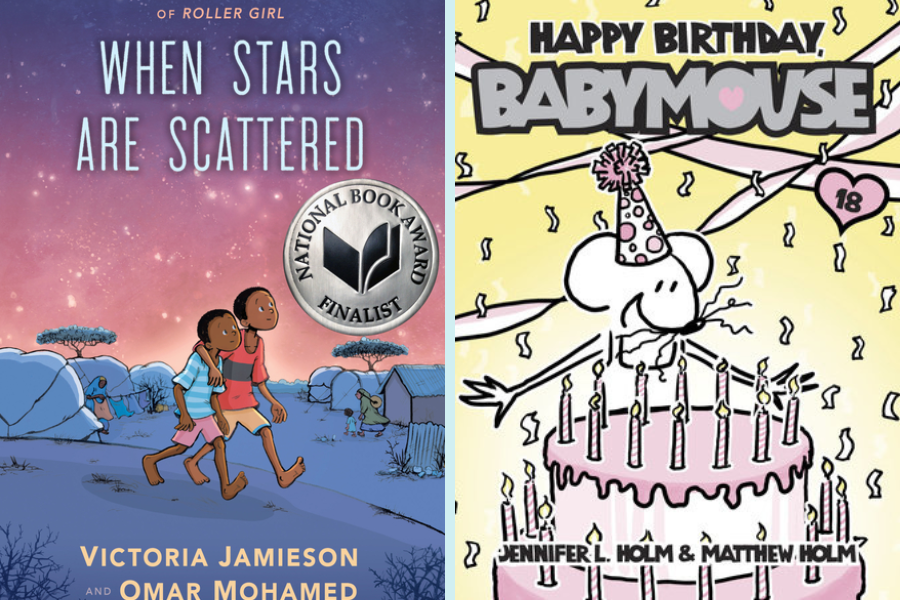Graphic novels are underappreciated in literary circles, often dismissed as “comic books” for kids or light reading unworthy of literary consideration. However, this perception rapidly changes as educators, scholars, and readers recognize their unique and profound benefits. Far from being mere picture books, graphic novels offer a rich reading experience that engages a wide range of readers. A 2023 survey from the National Literacy Trust Found that “children who read graphic novels in their free time were twice as likely to enjoy reading more overall and rated themselves good readers as compared to those that did not read graphic novels.”
Cognitive and Literacy Development
Enhancing Comprehension and Vocabulary
Graphic novels significantly enhance reading comprehension and vocabulary. The combination of visual and textual storytelling helps readers decode complex narratives. Further, readers learn to infer meaning from the text and the images. Readers analyze the pictures and the words as the story’s plot develops. As the Northwestern Center for Talent Development wrote, “This provides information in both verbal and visual formats, which helps readers retain information better as it is presented in the two formats.” Research has shown that graphic novels can improve students’ reading skills. For instance, a study published in the International Journal of Applied Linguistics and English Literature found that students who read graphic novels scored higher on comprehension tests than those who read traditional texts. The visual context provided by the illustrations helps readers grasp the storyline and character motivations more easily, which can be particularly beneficial for struggling readers or those learning a second language.
Bridging Reading Gaps
Graphic novels serve as a bridge for reluctant readers, helping them transition from picture books to more complex texts. Their engaging format can motivate students who are otherwise disinterested in reading. For example, a middle school student who finds traditional novels daunting might be more inclined to pick up a graphic novel, thus fostering a habit of reading that can extend to other forms of literature.
Cultural and Emotional Engagement
Diverse Representation
Graphic novels often feature diverse characters and stories that reflect various cultures and experiences. This representation can be empowering for readers who see themselves reflected in the stories they read. Graphic novels like “March,” which chronicles the Civil Rights Movement through the eyes of John Lewis, provide readers with opportunities to explore different perspectives and histories.
Emotional Resonance
The visual element of graphic novels allows for a deep emotional connection to the story and characters. The combination of expressive artwork and dialogue can convey emotions in a powerful way that resonates with readers. This can lead to a more immersive reading experience, where readers feel more connected to the narrative and its characters.
Educational Value
Enhancing Curriculum
Graphic novels can be valuable additions to educational curricula. They can teach various subjects, from history to science to literature. For example, books like The Iliad and Poe: Stories and Poems have been adapted to graphic novel forms to bridge the literacy access gap. These works can make historical events more accessible and engaging for students.
Developing Critical Thinking
Reading graphic novels requires the integration of visual and textual literacy, which can enhance critical thinking skills. Readers must interpret the interplay between images and words, analyze the sequence of panels, and understand the visual cues that guide the narrative. This multimodal form of literacy is increasingly important in our digital age, where text and imagery often convey information.
Support for ESL Learners
Graphic novels are particularly effective for English as a Second Language (ESL) learners. The visual context provided by the images helps these students understand new vocabulary and complex language structures more easily. Research indicates that graphic novels can improve reading comprehension and language acquisition in ESL contexts by providing visual clues that aid understanding.
Encouraging Creativity
Inspiring Visual Literacy
Graphic novels can inspire readers to become more visually literate, understanding and interpreting visual information more effectively. This is a crucial skill in today’s media-rich environment. Graphic novels like Happy Birthday, Babymouse, showcase the rich detail images can convey.
Stimulating Artistic Expression
For budding artists and writers, graphic novels can be a source of inspiration and a medium for creative expression. The process of creating a graphic novel involves not only writing but also drawing, designing, and composing the visual layout of the story. This can encourage students to develop their artistic skills and explore new ways of storytelling.
Addressing Complex Themes
Graphic novels can address complex and mature themes in a way that is accessible to readers of all ages. They often tackle identity, mental health, social justice, and morality. The visual format can make these heavy topics more approachable and facilitate discussions around difficult subjects. For example, Gareth Hinds’s Romeo and Juliet explores themes of cultural identity and Shakespeare’s universality. At the same time, Victoria Jamieson and Omar Mohamed’s When Stars Are Scattered discusses the details of life as a refugee. These stories can provide a starting point for conversations about important social and personal issues.
Graphic novels are a valuable form of reading that offers numerous benefits. They enhance comprehension and vocabulary, engage diverse readers, and foster critical thinking and creativity. As educational tools, they make complex subjects more accessible and engaging. Moreover, their ability to address deep and complex themes makes them a powerful medium for storytelling. Graphic novels offer a unique perspective on literature and education, and it’s time to embrace their potential to enrich the reading experience for all.
Bonus: Listen to When Stars Are Scattered author Victoria Jamieson on season two, episode five of our Ready For Reading podcast.
Our literacy tips are brought to you by Reader’s Digest Foundation.

